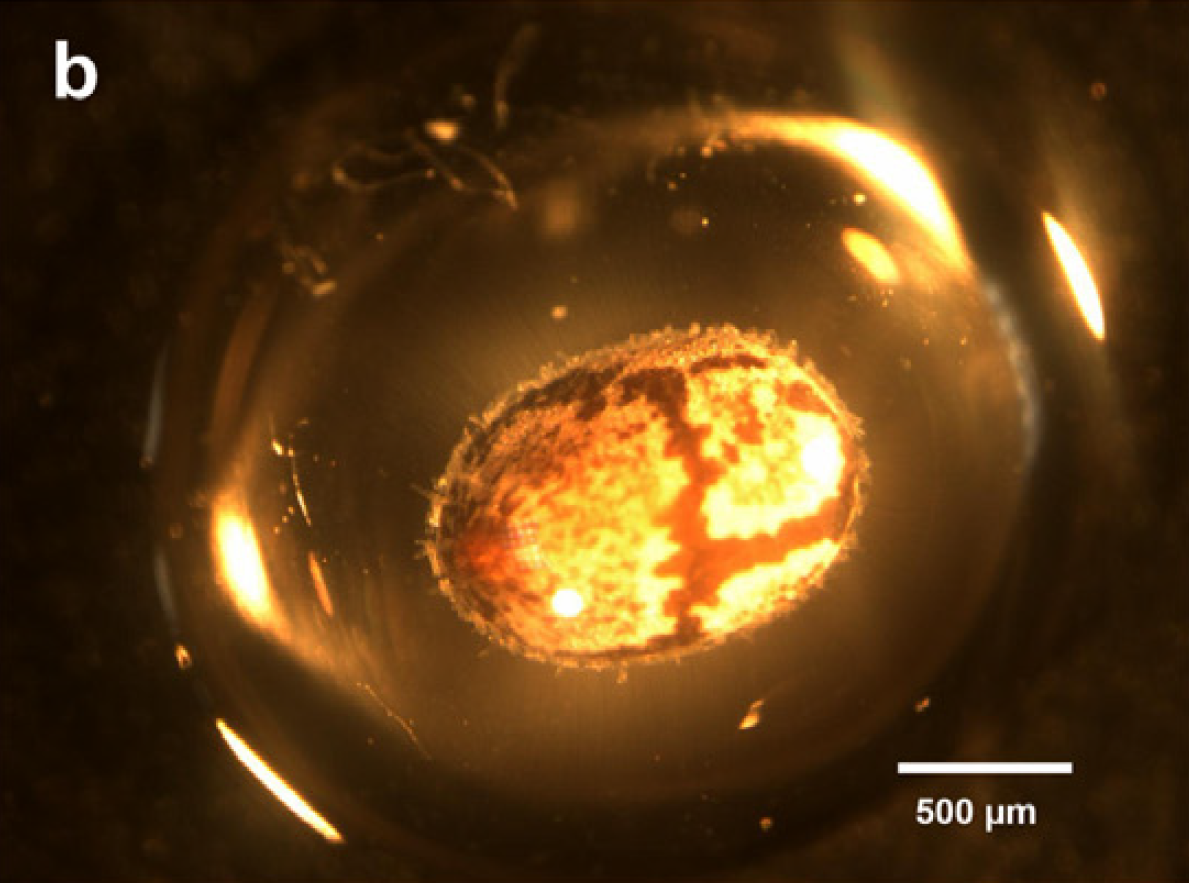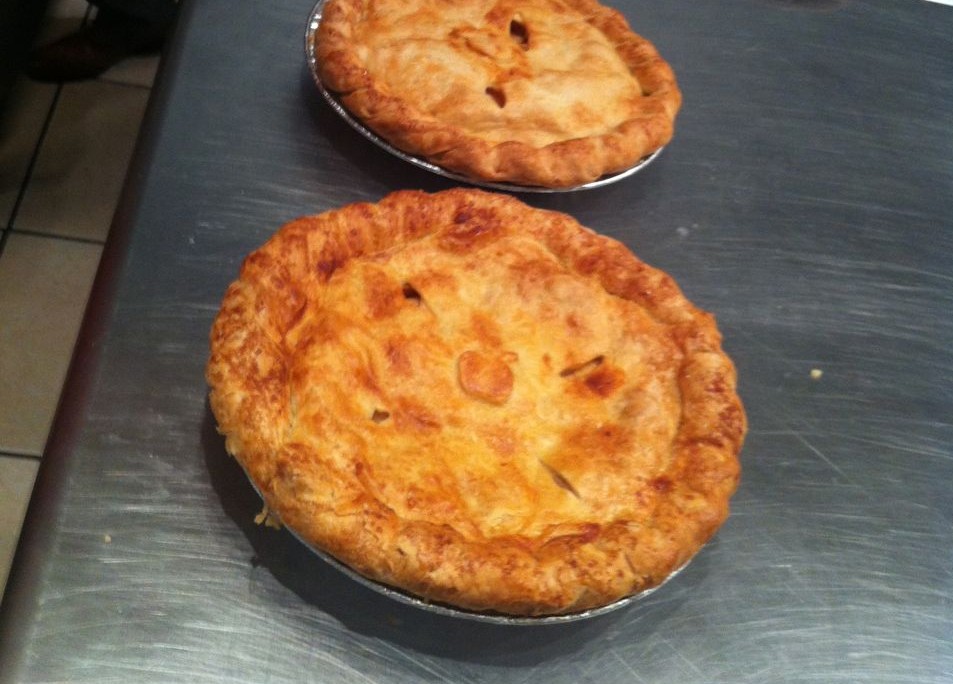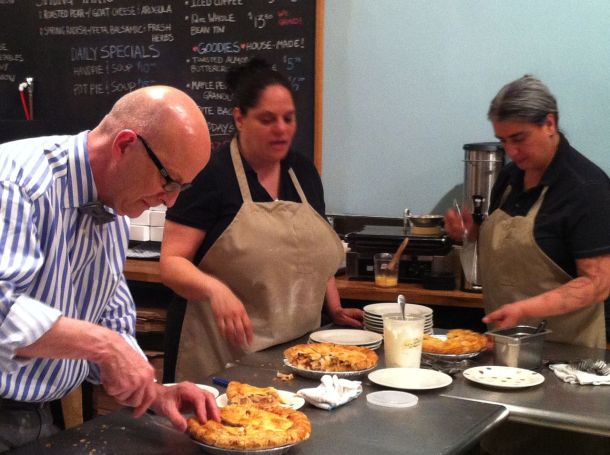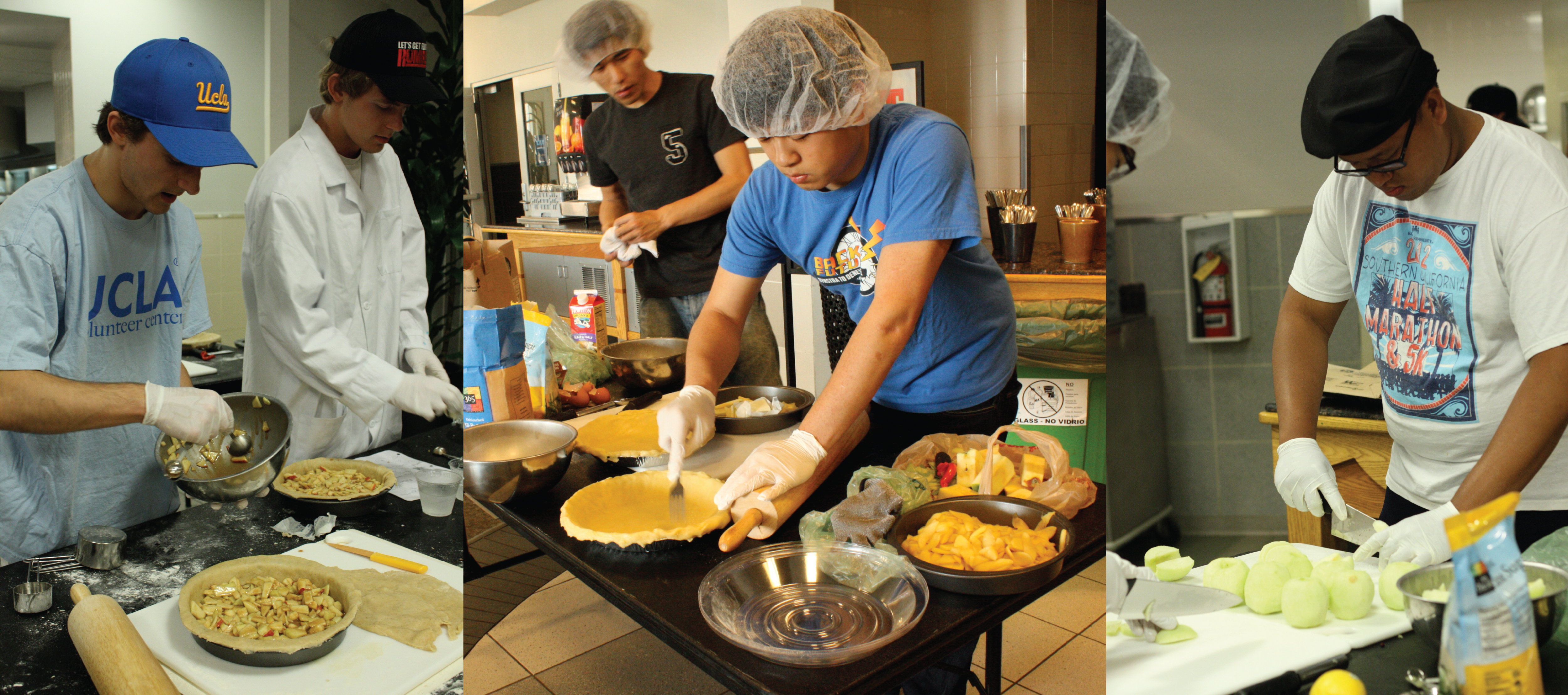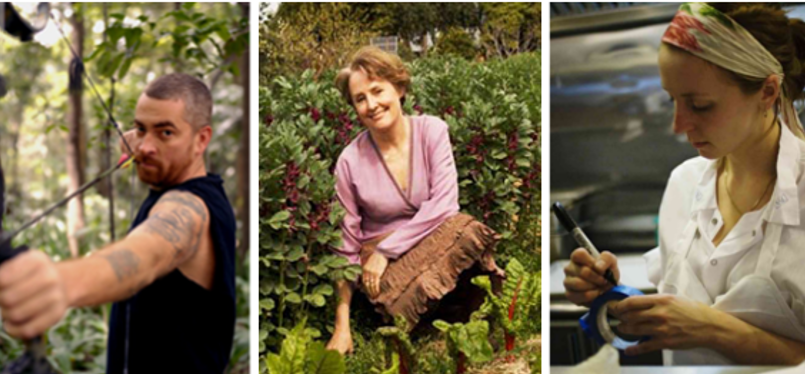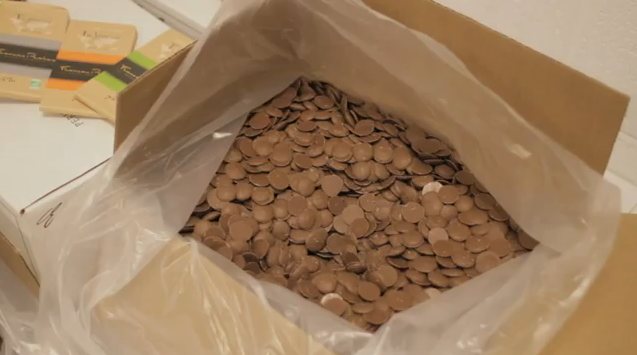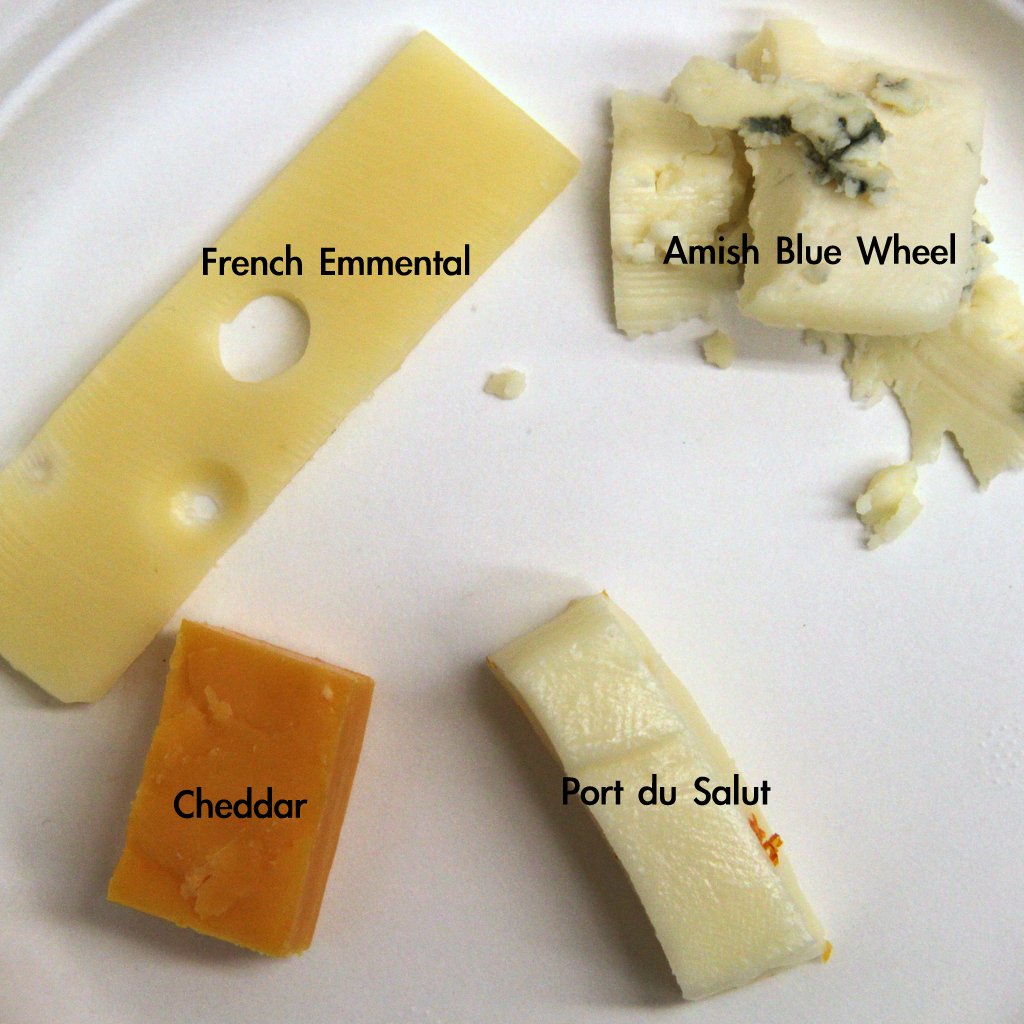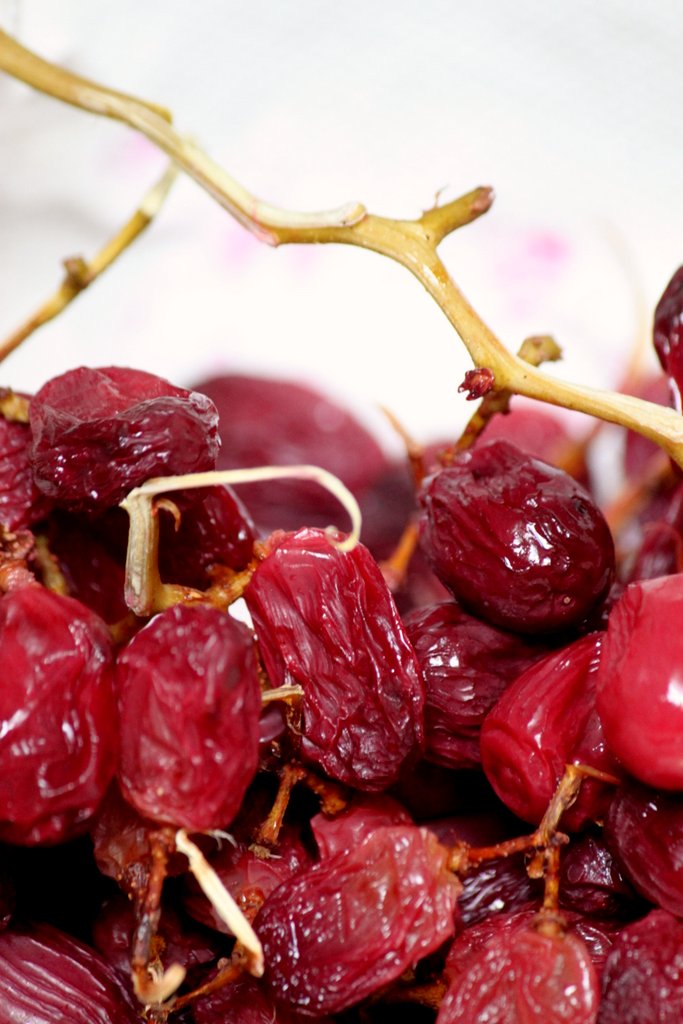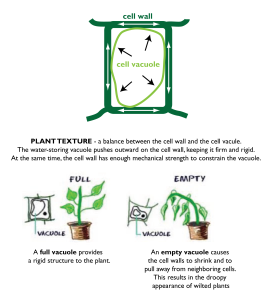Chia Seed Apple Pie
Continuing our Science of Pie adventure, we’ve invited Elsbeth Sites of Team Chia to share her pie science project, which examines the use of a very unconventional thickener to tune the viscosity of pie filling. Elsbeth is an undergraduate student of physiological sciences at UCLA who is passionate about food and writing, especially writing about food.
Have you ever baked a lovely pie, sliced it and placed it gently on your best dessert plates, then watched in despair as the filling fled its warm crust and bled all over the dish? This common and unfortunate experience led our team to investigate the viscosity of pie filling. We hoped to discover a way to produce a pie of perfect viscosity that upon slicing, would not spread over the plate too far, nor be too gelatinous. Most pies contain cornstarch to thicken their fillings. To make our project unique and to put a modern and healthy twist on our pie, we replaced starch with the trendy new superfood: chia seeds.
The outside of the chia seed contains large fibrous molecules called polysaccharides. When the seed is wet, these molecules are exuded from the seed and trap liquid. This allows the seed to hold approximately nine times its own weight in water, causing a bead of gel to form around the seed [1].
 |
| Chia seed hydration. Chia seeds can absorb approximately nine times their weight in water. Water absorption creates a mucilaginous gel around the seed. Figures are from [1]. |
With this knowledge of the chia seed, we posed these questions:
- How do we create a pie that does not bleed across a plate when sliced while not being overly gelatinous?
- Can chia seeds be used to increase the viscosity of our pie filling?
- At what concentration should the seeds be added to the pie to get an ideal viscosity without compromising taste or texture?
We defined our perfect filling to be one that spread slightly when placed on a flat surface without remaining too gelatinous and not spreading at all. A traditional apple pie filling prepared with cornstarch spread 5.6 centimeters in 60 seconds. Finding the right concentration of seeds to add was a tedious process, and the heat at which the pie was baked and served greatly affected the pie’s viscosity. As shown in the figure above, our control filling with no thickening agent spread on average 5.9 centimeters in 60 seconds—clearly too runny. The filling to which we added 0.5 teaspoons of chia seeds spread 5.5 centimeters. By evaluating these spread distances and tasting each filling, we agreed that the filling with only 0.5 teaspoons seeds yielded the best viscosity and palatability. Using more seeds than this overpowered the spices in the filling, making the pie taste nutty and giving it a slimy mouthfeel.
Our experiment was successful in that we answered our original questions:
- Chia seeds can indeed be used to tune the viscosity of apple pie filling.
- To produce an apple pie of optimal viscosity, replace cornstarch with 0.5 tsp chia seeds per ½ cup of filling. While our pie might appeal to the culinarily curious or health savvy, those who prefer a classic pie may find the seeds of the pie annoying, or might miss the texture that more traditional thickeners like cornstarch or flour provide the filling.
If a seedy apple pie up your alley, here is Team Chia’s recipe for Chia Seed Apple Pie. The truly adventurous might even try using chia seeds in a berry pie where thickening agents are more crucial and tiny seeds are less noticeable. If you do try another variation of a chia seed pie at home, let us know how it goes in the comments below!
Pie Crust
Adapted from Everyday Food: Our Best Pie Crust
2 1/2 cups all-purpose flour, plus more for rolling dough
1 tsp salt
1 tsp sugar
16 tbsp (2 sticks) cold unsalted butter, cut into pieces
4 tbsp ice water, plus 2 more if needed
In a food processor, pulse flour, salt, and sugar several times to combine. Add butter. Pulse until mixture resembles coarse meal, with just a few pea-size pieces remaining.
Sprinkle with 4 tablespoons ice water. Pulse until dough is crumbly but holds together when squeezed with fingers (if needed, add up to 2 tablespoons more ice water, 1 tablespoon at a time). Do not over-process.
Turn dough out onto a work surface; form dough into two 3/4-inch-thick disks. Wrap both separately and tightly in plastic, and refrigerate until firm, at least 1 hour.
Pie Filling and Assembly
5 Granny Smith apples, sliced
3/4 cup granulated sugar
2 1/2 tsp chia seeds
1/2 tsp ground cinnamon
1/8 tsp ground nutmeg
1/2 cup cold water
3/4 cup apple juice
Preheat oven to 350 degrees.
Wash, peel, and core apples. Cut apples into 1/4- to 1/2-inch slices and place in cold water.
Combine sugar, chia seeds, and spices in a large pot with water and apple juice. Stir and cook on medium high heat until mixture thickens and begins to bubble. Boil for 1 minute, stirring constantly. Fold in apple slices immediately and remove from heat.
To assemble pie, roll dough into 2 14-insh rounds. Fit the first crust into the bottom of a 9-inch pie plate. Spoon filling into the pie dish. Cover the pie with the second crust, trimming the overhang to about 1 inch. Press upper and lower crust edges together and flute as desired. Cut steam slits in the center of the top crust.
Bake for 20 minutes at 350 degrees or until crust is golden brown.
References Cited
- Muñoz LA, Cobos A, Diaz O, Aguilera JM (2012) Chia seeds: Microstructure, mucilage extraction and hydration. J Food Eng 108: 216–224. doi:10.1016/j.jfoodeng.2011.06.037.

